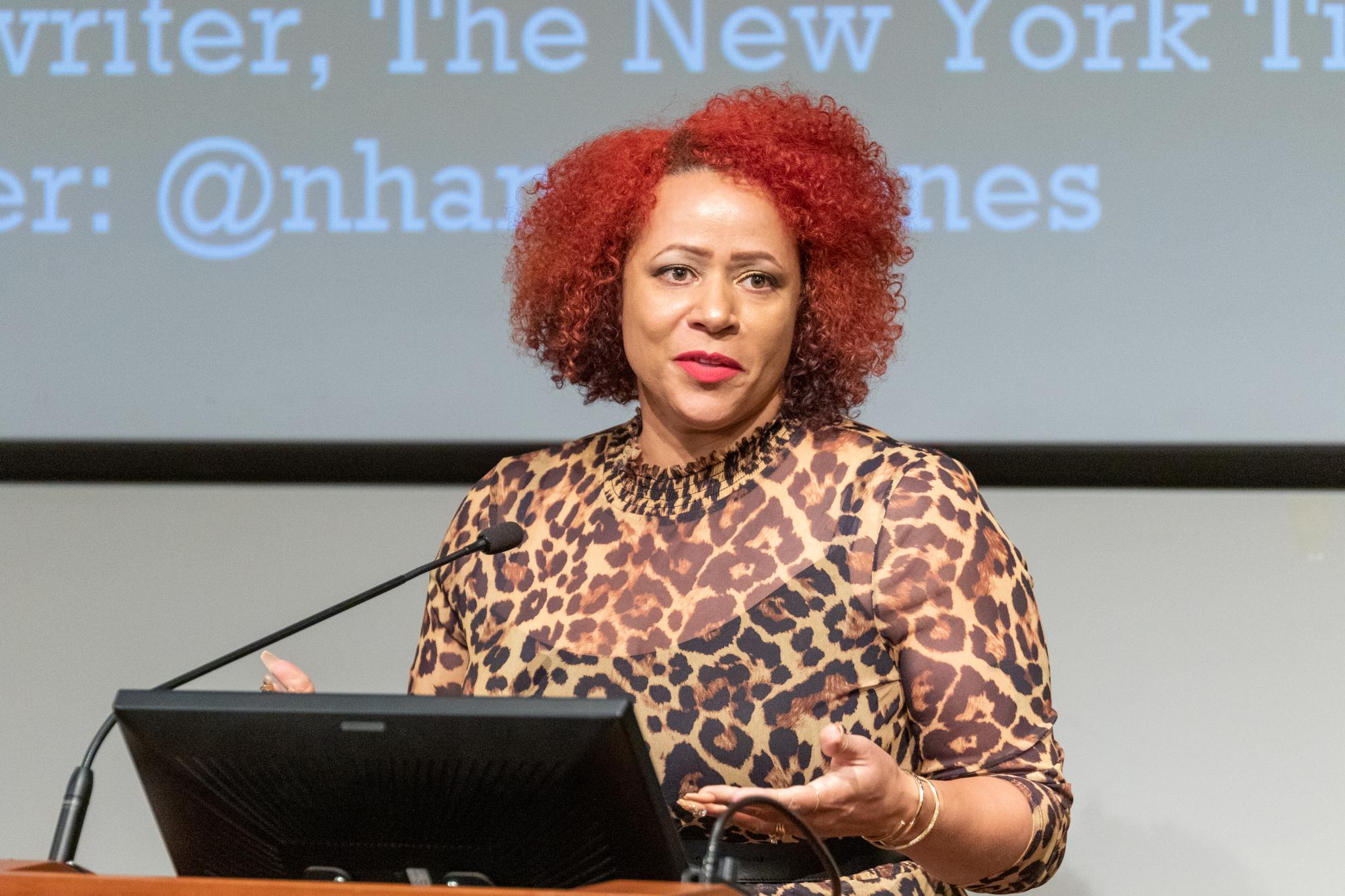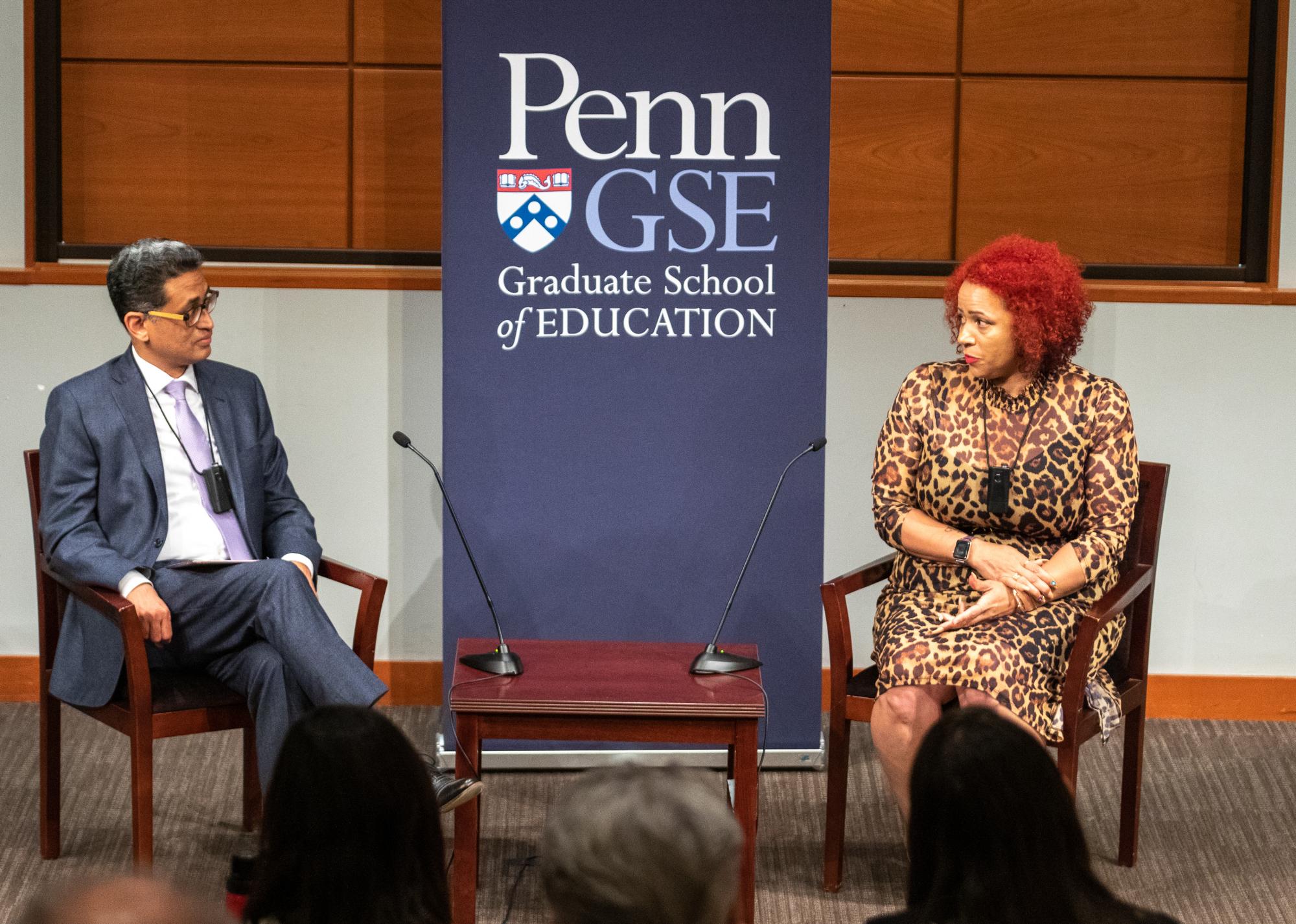In telling the story of school segregation, Nikole Hannah-Jones shows how choices increase or decrease integration

When it comes to school segregation in the 21st century, which children are getting left behind?
That rhetorical question, posed by award-winning investigative New York Times Magazine reporter Nikole Hannah-Jones, quieted a room filled with educational experts, legal scholars, historians, and students at the Steven S. Goldberg and Jolley Bruce Christman Lecture in Education Law, co-sponsored by Penn GSE and Penn Law.
Hannah-Jones, who created the New York Times Magazine 1619 Project, gave a master class that covered present-day school segregation and the choices that led to it. Her research for the 1619 Project has resulted in a thorough uncovering of how every facet of American life has been impacted since the first slaves arrived in 1619—and how the U.S. is still grappling with systemic racism 400 years later.
School segregation and the 1619 Project
“I’ve been obsessed with 1619 since high school, when my teacher recommended Before The Mayflower,” said Hannah-Jones. “In America, we’re pretty terrible when it comes to history—particularly slavery, anti-black racism, and the role it has played. When it comes to the political, cultural, and social systems in this country, we have damn-near amnesia. We have to go back to the beginning to understand how we got here.”

The biennial Steven S. Goldberg and Jolley Bruce Christman Lecture in Education Law provides a platform for students, alumni, faculty, staff, and the broader community to learn from some of the most pressing issues in the field today and work towards increasing equity and social justice in education.
“Through her powerful reporting on school segregation and the 1619 Project, Nikole pushes us all to rethink our history and the role our choices play in creating the next chapter of the American story," said Penn GSE Dean Pam Grossman.
In her lecture, Hannah-Jones presented a chronological timeline of slavery in America—and didn’t skimp on the uncomfortable descriptions and brutal imagery that history books often omit. “We were the third to last country in the Americas to end slavery,” she said. “Slavery is deeply entrenched in the fabric of this country.”
Philadelphia's role in sustaining inequality
Philadelphia played a key role in sustaining inequality, Hannah-Jones pointed out. “As Thomas Jefferson was drafting the Declaration of Independence in Philadelphia, his enslaved brother-in-law was serving him at home—ensuring that Jefferson was comfortable,” she said. “Jefferson blamed England for slavery. He called slavery a great crime. But if you look at the original draft, you will see that there isn’t a section on slavery because the founders didn’t plan on getting rid of it.”
Even today, schools in “blue” northern states are often more segregated than those in the south. Armed with ideals and educational data, Hannah-Jones and her husband were faced with their own difficult choice in Brooklyn when it was time to enroll their daughter in school. To find out what happened, read her 2016 essay Choosing a School for My Daughter in a Segregated City.
Following the presentation, Hannah-Jones chatted with Dr. Rand Quinn, a Penn GSE associate professor whose new book Class Action: Desegregation and Diversity in San Francisco Schools is due out in January 2020. She challenged the audience to question how Philadelphia public schools are currently functioning. “Look at the racial makeup of your best schools and consider whose children are suffering,” she said. “If you believe in public schools, you have to fight for integration.”
The message, powerful and provocative, challenged the audience to fight for better education for everyone, not just their own. “The system has been built on a compromise of black children’s education,” she said. “Access to quality education changes lives.”
— By SJ Punderson

